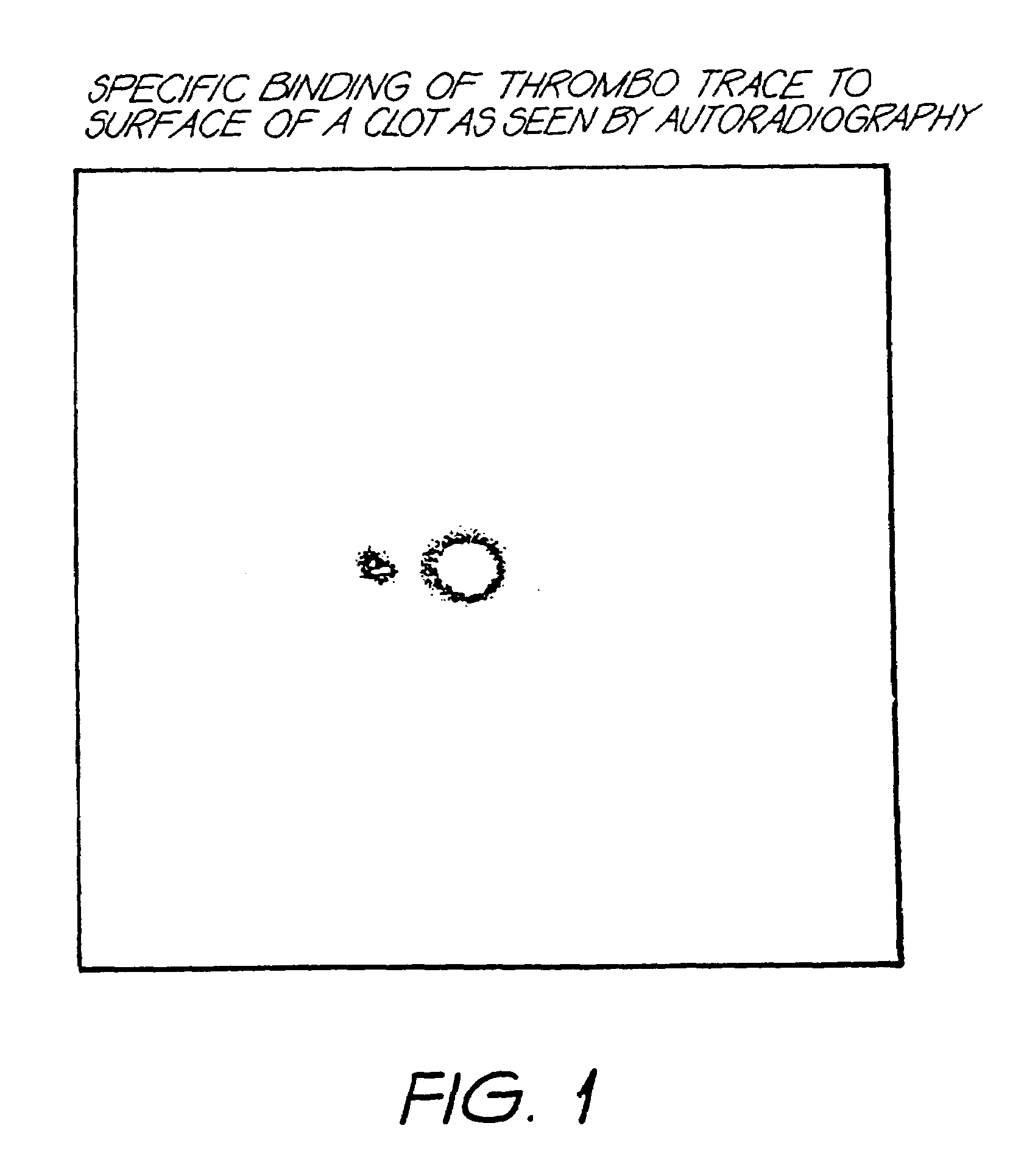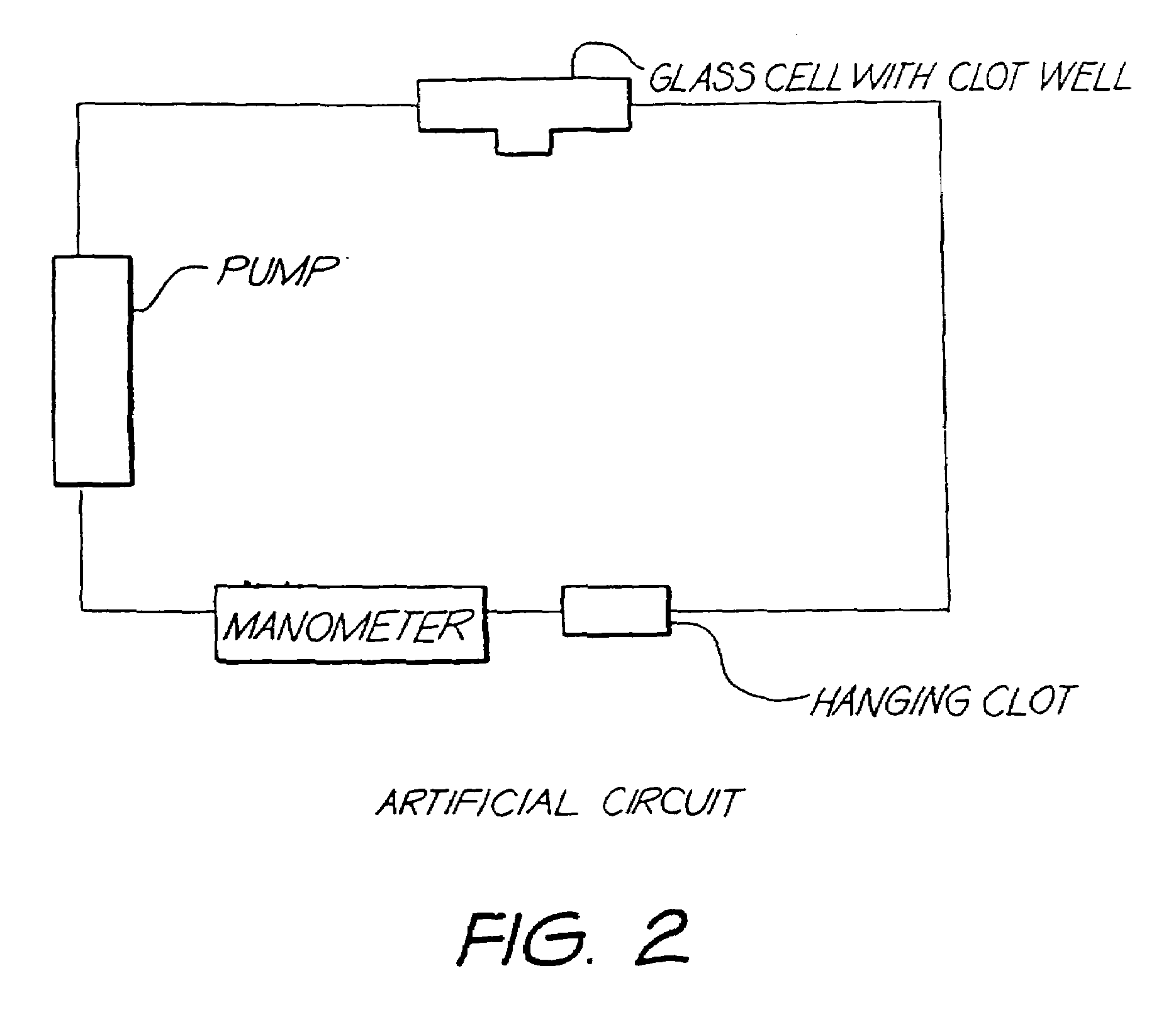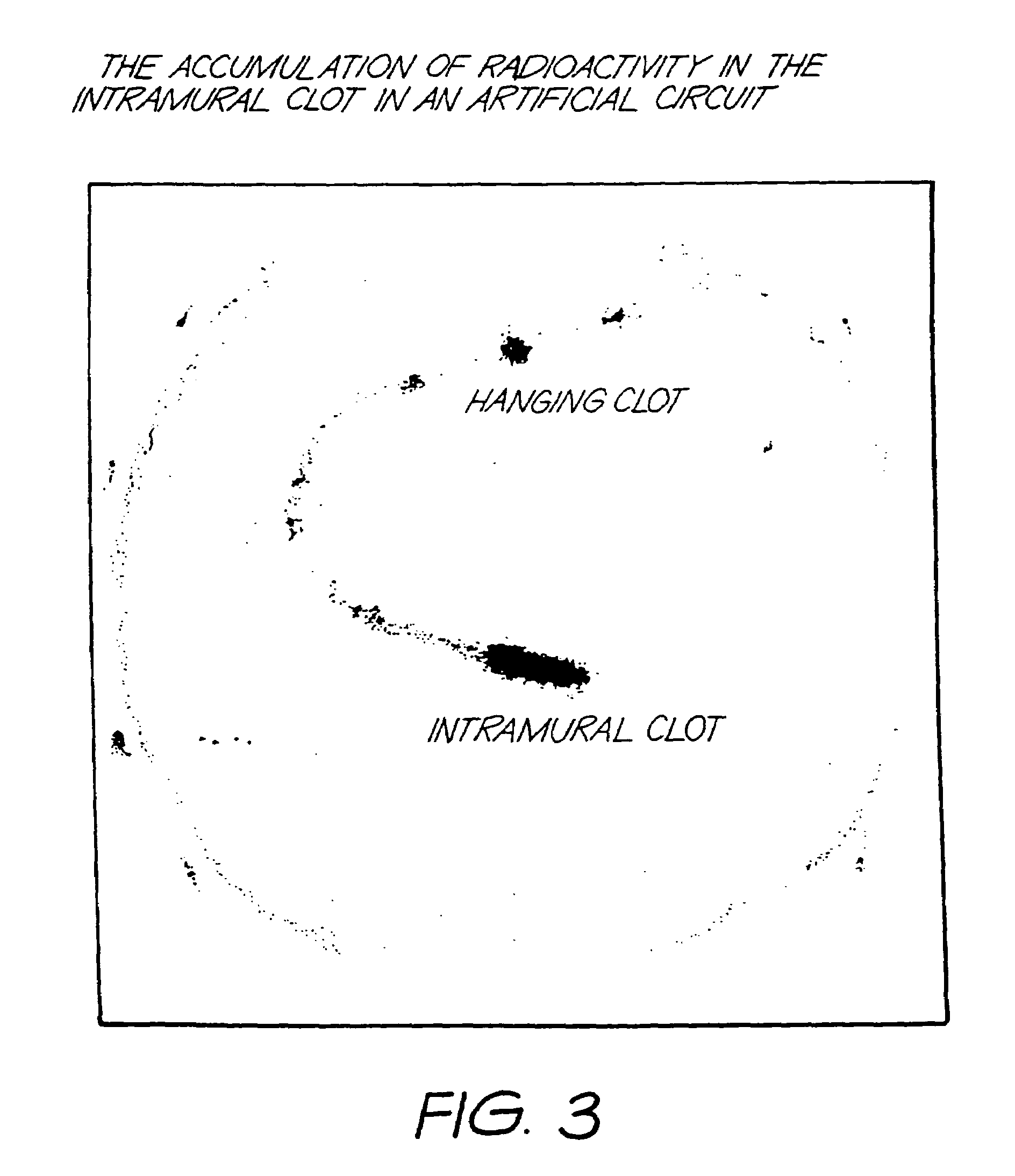Method for detection of fibrin clots
a micromolecule and fibrin technology, applied in the field of macromolecule labeling, can solve the problems of non-specific and false positive, and achieve the effect of enhancing the binding efficiency
- Summary
- Abstract
- Description
- Claims
- Application Information
AI Technical Summary
Benefits of technology
Problems solved by technology
Method used
Image
Examples
example 1
[0080]Particles were prepared in accordance with the methods of Australian Patent No. 589 578 except the graphite crucible was subjected to four lots of 2.7 sec heating pulses to 2700° C. in pyrolytic or glassy-carbon. The disclosure of Australian Patent No. 589 578 is hereby incorporated by reference.
example 2
[0081]Particles were formulated into normal saline by precipitating the particles formed as per Example 1 using precipitation apparatus and methods of Australian Patent No. 686861 the disclosure of which is hereby incorporated by reference, and then mixing the desired amount of the particles with normal saline.
example 3
[0082]Plasma was mixed with a small aliquot of particles formulated into saline in accordance with Example 2 and clotted with 1 U / mL thrombin. After incubation at room temperature for 1 hour the plasma clot was crushed using a wooden spatula. A gamma counter was used to count radioactivity. Radioactivity was confined to the fibrin with less than 3% of the original activity resident in the exudate.
PUM
 Login to View More
Login to View More Abstract
Description
Claims
Application Information
 Login to View More
Login to View More - R&D
- Intellectual Property
- Life Sciences
- Materials
- Tech Scout
- Unparalleled Data Quality
- Higher Quality Content
- 60% Fewer Hallucinations
Browse by: Latest US Patents, China's latest patents, Technical Efficacy Thesaurus, Application Domain, Technology Topic, Popular Technical Reports.
© 2025 PatSnap. All rights reserved.Legal|Privacy policy|Modern Slavery Act Transparency Statement|Sitemap|About US| Contact US: help@patsnap.com



